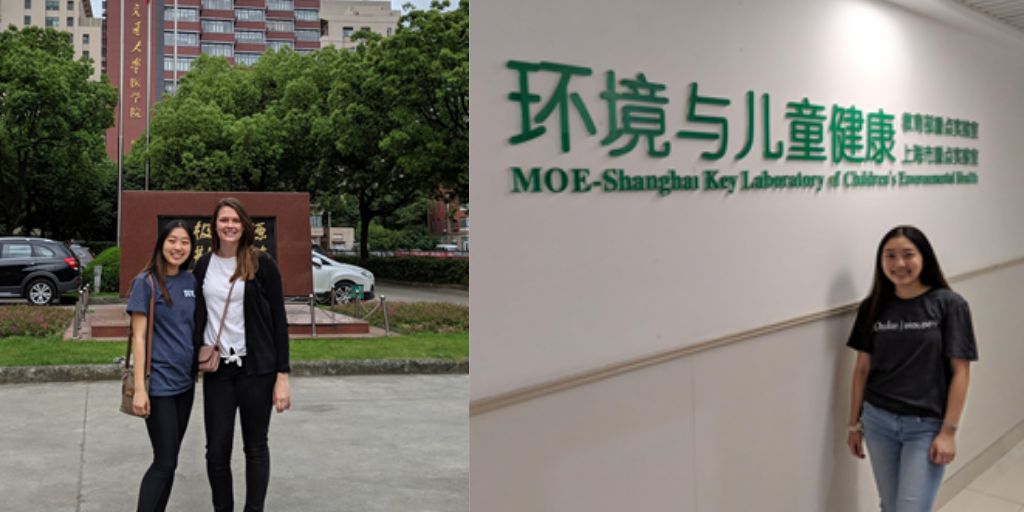E-waste Impact on Birth Outcomes
Project Team

Team profile by Chrissy Crute, Ph.D. Candidate
Our society continually receives messages encouraging us to upgrade our electronic devices: the new iPhone, thinner laptop, high definition television! At face value, these messages are a sign of capitalism at work coupled with quickly expanding technological advances. But when we consider our culture’s relationship with technology, these unsustainable products elicit many concerns, one of which is: where do our castoff electronics go?
Electronic waste, or “e-waste”, refers to discarded electronics, which are often recycled to salvage precious materials. Notably, this electronic scrap contains hazardous materials such as lead, cadmium, mercury, plasticizers, and brominated flame retardants. As such, the e-waste recycling process is associated with substantial environmental pollution and numerous human illnesses.
Over many decades, China has been the major player in e-waste recycling, taking in up to 70% of worldwide e-waste. The city of Taizhou has been involved in e-waste recycling for more than 30 years and is one of the largest e-waste processing centers worldwide. Liping Feng (Associate Professor of Obstetrics and Gynecology) traveled to Taizhou in 2018 to begin investigating the health effects of e-waste recycling on pregnant mothers and their children. From this initial study, our Bass Connections team was formed to further understand this complex global health issue.

Our multidisciplinary team investigated three interconnected levels affecting maternal health outcomes:
- To investigate the institutional role of e-waste exposures, the policy team researched existing policies that regulate e-waste import, handling, and personal protection.
- To investigate community perspectives, the community research team deployed a questionnaire to gather knowledge about e-waste and health effects, as well as a wristband to understand exposures.
- To investigate the individual maternal health outcomes, the health research team reviewed existing literature and designed laboratory tests to examine effects of exposures on pregnant women.

Right: DKU team leader John Ji kindly welcomes Liping, Chrissy, and Yan to Kunshan.
In Summer 2019, a small field team conducted site visits in Taizhou, which included recruiting participants to wear wristbands that evaluate chemical exposure and answer a questionnaire. We visited Duke Kunshan University to connect with our policy team leaders, Kathinka Furst (Assistant Professor of Environmental Policy) and John Ji (Assistant Professor of Environmental Health Science). We also processed biological samples previously collected from pregnant women in Taizhou at Shanghai’s Xinhua Hospital.

Right: Amy Zhao in the Shanghai Key Laboratory of Children’s Environmental Health.
“I especially enjoyed working with other investigators and students in Shanghai to troubleshoot and improve our project, highlighting the truly collaborative and dynamic nature of research. I learned so much from this experience, and I hope to work at the intersection of environmental exposures and cellular processes to study children’s health outcomes in my own future.” –Amy Zhao
This academic year, students worked in small groups to research and report their findings:
- Our policy team wrote a policy brief highlighting discrepancy between the national regulation of e-waste and the reality of current practices. The brief argues that while national policies set a respectable precedent, economic gains of e-waste recycling will continue to outweigh adverse human health until local actors are mobilized to carry-out regulation and enforcement.
- Our community research team analyzed Taizhou community surveys and exposure data. Overall, they found that community members were at high risk of exposure to e-waste remnants in the environment and there was a lack of effective communication between these affected communities and government.
- Our lab team completed initial testing of experiments to investigate the cellular effects of e-waste chemical exposure on placental development. They determined dosing parameters of chemicals of interest, and plan to measure the resulting changes in global DNA methylation levels and mitochondrial copy number next year.
In addition, a few team members presented their work to middle and high school students as part of Duke Splash. They discussed the definition of electronic waste, the different stakeholders in the electronics industry, and the best practices for being an informed consumer of electronic goods.

“With our growing understanding of E-waste and its health impacts, our Bass Connections team thought Splash would be the perfect way to share our knowledge with our community. Together, my teammates and I created a presentation as well as a fun, interactive game for our students to think deeply about the problems of E-waste, chemical exposure, big businesses, and health inequities. It was a great experience to share with younger students who were interested in learning more about our project.” – Angela Pham
Impacts of Maternal Exposure to E-Waste on Birth Outcomes
Poster by Ashley Choi, Nadrat Chowdhury, Christine Crute, Ellea Lamb, Julia Muprhy, Angela Pham, Aneesha Raj, Yan Sun, Connie Xiong, Amy Zhao and Liping Feng

